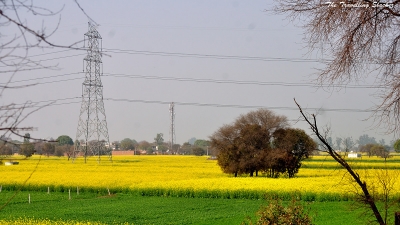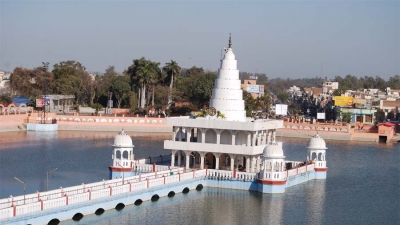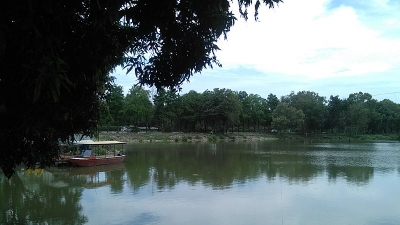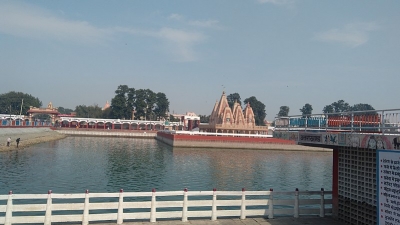Fatehabad Attractions - Tourist Places To Visit In Fatehabad
-
01Humayun Mosque
 + Read More
+ Read MoreHumayun Mosque, as the name suggests, was built by Mughal Emperor Humayun. He was, however, not a strong ruler like his father, Babur. He was defeated by Sher Shah Suri and while on his way back he halted at a place where Feroz Shah Tughlak had built a fort.
Humayun offered Friday prayers at this place and thereafter a mosque was also built here as a tribute to him. The architecture of the mosque follows Mughal style and it was completed in three decades from 1529 to 1556.
The mosque hosts a big screen built with Lakhauri bricks pointing to its west as a direction for holding prayers. There is also a mehrab, an arch, which shows the direction of Kaaba in Mecca, the holiest place of Muslims.
Humayun mosque is a very popular Islamic shrine and the Muslims visit the place in large numbers on Fridays to offer their prayers. It is a huge monument and can host thousands of people at a time.
-
02Lat (Stone) Pillar
 + Read More
+ Read MoreLat is an Urdu word for a stone pillar. The stone pillar at Fatehabad was actually built by Emperor Ashoka either at Hisar or Agroha in Haryana. It was aptly called Kirti Stambh of Emperor Ashoka.
The lofty pillar was, however, dismantled by Firoz Shah Tughlak following the traditions of other Muslim rulers in the country who used the material from the Hindu monuments to build mosques and other Muslim structures to eulogize their own names.
Firoz Shah Tughlak transferred the lower part of the pillar to Fatehabad and used it to build another lat here. He chiseled the original Ashokan epigraphs on the pillar and inscribed his own family history in the Arabic script.
He took away the upper part to Hissar where he used it in a mosque. The lat with a height of 15.6 ft and a base of 6 ft was built by the side of an idgah or mosque in Fatehabad fort of Feroz Shah Tughlak.
-
03Kunal
 + Read More
+ Read MoreKunal is known for a historic mound located on the banks of the dried Saraswati river in the Fatehabad region. It is one of the oldest archaeological sites in the Haryana state. Excavations conducted at Kunal reveal a wealth of information on Harappan and Pre-Harappan culture.
The historians have discovered a host of remnants of those times including pottery items, triangular shaped terracotta cakes, scripts, silver coins, a crown, several royal items including gold and silver ornaments, jewellery made of semi-precious stones and many more interesting articles.
Above all, the excavations at Kunal mound reveal a very significant evidence about the three phases of the evolution of the Pre-Harappan culture. It shows how the people first lived in pits and then they built houses with mud bricks and finally they moved on to using kiln-baked bricks to make square and rectangular residences.
The historians have come to a definite conclusion that the Vedic culture and the Pre-Harappan culture, in essence, are the same. The discovery of the triangular terracotta cakes testifies to the belief in Rig Veda that they were a symbol of fertility. The location of Kunal on the now dried Saraswati also finds mention in the Rig Veda.
-
04Banawali
 + Read More
+ Read MoreBanawali, also called Vanavali is an archaeological mound site located around 16 km from Fatehabad city. The mound is around 10 m high and is spread over an area of approximately one square mile. It is a popular tourist destination for those who have academic interest in historical and archaeological sites even though there is no human habitation closeby. The excavations at Banawali have revealed an invaluable fund of historical information about the pre-Harappan and the Harappan era during 2500 BC–2300 BC and 2300 BC–1700 BC, respectively.
The archaeologists have discovered the evidence of the existence of a full-fledged township dating back to these times. They have also concluded that the main vocation of the people was agriculture. They sowed the crops such as barley, mustard and sesame.
Their main agricultural implement was a wooden plough. The discoveries include a host of items that throw light on the level of prosperity of the people in those times. The people lived in planned houses built with mud bricks. They had living rooms, kitchens, store rooms, toilets with ceramic pots, wash basins and drainage systems.
There were well-laid roads and lanes. The articles found include jewellery and idols of gods and goddesses made of gold, bronze, copper and silver. The artisans used copper and bronze to make the tools and weapons. Several idols and paintings showing birds, flowers and trees have also been found.



 Click it and Unblock the Notifications
Click it and Unblock the Notifications





